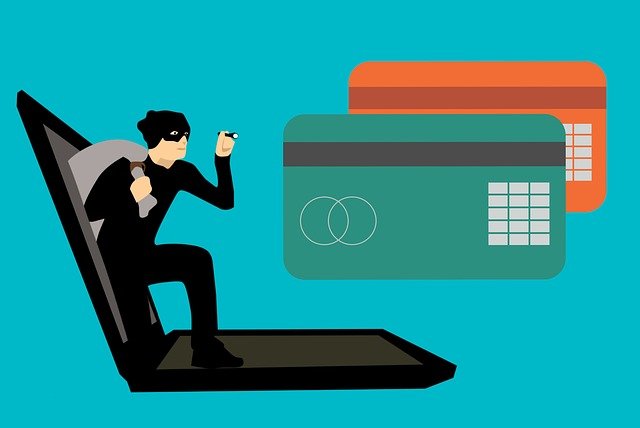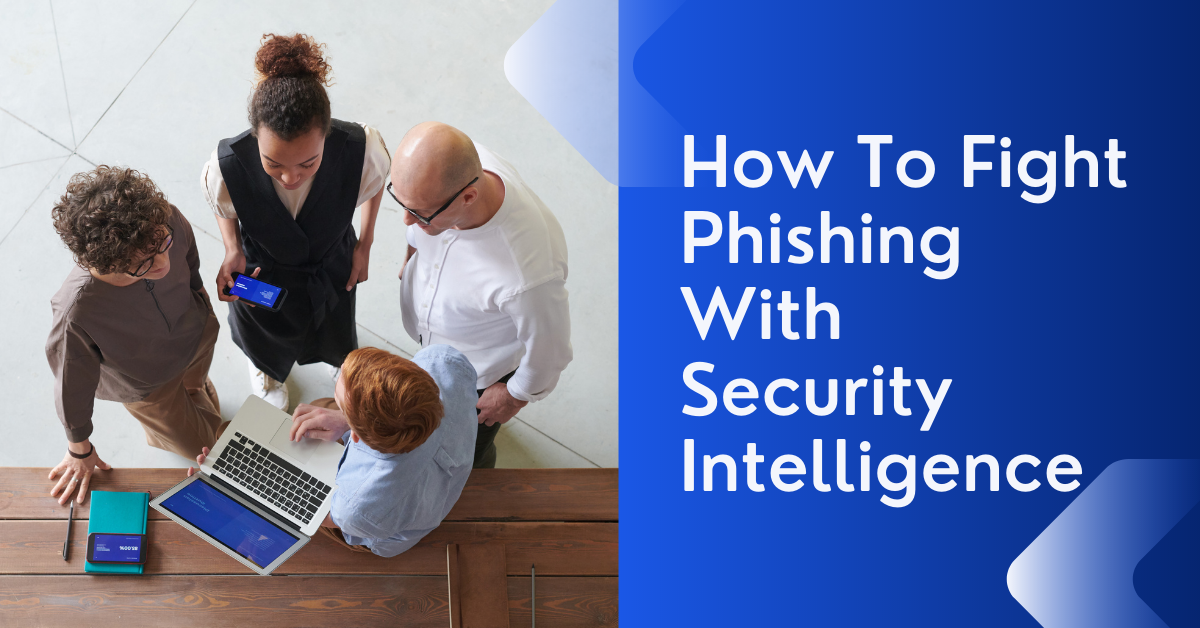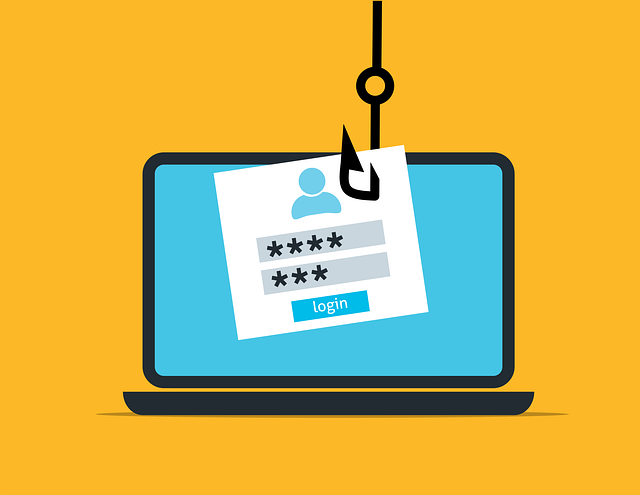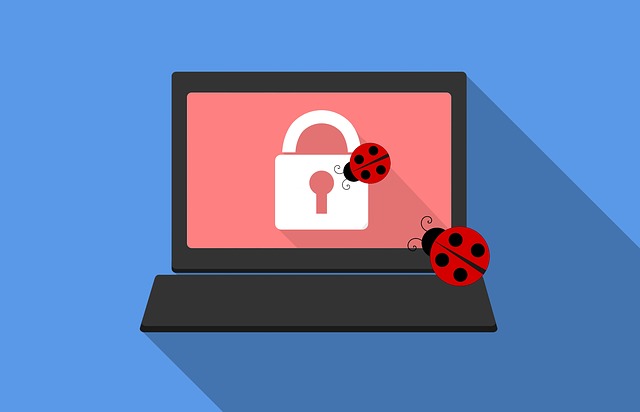This post will show you how to fight phishing with security intelligence.
Phishing is one of the most frequent cyberattacks that trick users into revealing their personal information to an unreliable source – the hacker. Phishing is often “packed” inside an email attachment or a link, leading to a shady website that looks authentic.
Users unfamiliar with phishing often fall into a trap and reveal their personal data, including their Social Security number, credit card information, or passwords, to a group of hackers. They later use it for dishonest activities, such as identity theft (and that’s not a joke!).
The best protection against a phishing attack is learning to recognize the potential threat and implementing the best cybersecurity measures to safeguard your IT infrastructure – security intelligence.
Such an all-encompassing approach is convenient for organizations dealing with severe cyber threats, and it involves various actions to protect your IT environment.
This post will share first-hand tips for detecting and blocking phishing attacks using security intelligence. Before you learn how to fight phishing, let me show you how to recognize phishing attacks.
Table of Contents
How To Recognize Phishing Attacks?
Cybercriminals can do anything to gather sensitive information, granting them access to your bank accounts or emails. Phishing is one of the most convenient ways to do that, especially if the user is unaware of the existence of such a scam.
The reason why users often fall for phishing tricks is that phishing texts or emails look genuine. This is because they use a reputable company’s name and logo, and they communicate in the same manner the company you trust uses when sending you newsletters or similar notifications.
Most phishing emails or texts follow the same scheme. They tell you a story that’s either too good to be true (You inherited a billion dollars from a cousin from North Dakota, and they need your bank account information to pay you money), or need you to act immediately and “resolve a billing problem.”

Therefore, you may recognize a phishing email if it uses some of the following messages to trick you into sharing your valuable data:
- There have been some suspicious log-in attempts;
- There is a problem with your credit card or payment information;
- You must confirm your personal data immediately if you want to continue to use your account;
- There is an attachment with a fake invoice;
- They need you to click on a link to make a payment or confirm your personal data;
- You’re eligible for a refund;
- You’ve just got a free coupon, and they need you to fill out the form to receive it;
- The sender is always unknown; their email address is often miswritten and has too many characters.
While you can recognize some phishing attempts pretty easily, some go a step further. More advanced phishing emails look like they’re sent by a company you trust, so that doesn’t seem suspicious to a user.
However, they aren’t foolproof either.
This email might seem legitimate at first glance, but if we look closer, we’ll see some unusual signs. For example:
- Grammatical error – Dears customer;
- A reputable company always calls you by your or your organization’s name – Instead of a generic form, Dear customer, they’ll write Dear Ana, for example;
- They say they’re experiencing some billing troubles and require your immediate action. In this case, to update your Mastercard info;
- They invite you to click on a link to update your personal data.
Now, let me reveal how to fight phishing attacks.
How To Fight Phishing With Security Intelligence
Antivirus & Anti-Spam Features
Integrated email scam filters may or may not detect phishing attacks, which calls for a separate antivirus software solution to add an extra layer of protection.
Besides higher-end endpoint protection that’s more convenient for organizations, you can benefit from some free, entry-level programs with equally powerful protection features.
Antivirus software is the first step toward establishing a safe network and preventing dangerous phishing attacks that could negatively affect your professional or personal life.
Security Intelligence
Unlike antivirus software or email filtering, security intelligence is based on a more comprehensive approach. Security intelligence involves collecting, standardizing, and analyzing data generated by networks in real time.
The gathered information is later used to evaluate and improve the organization’s security and protection against various emerging cyber threats.
Leading world organizations and big corporations often hire security analysts to take care of their IT infrastructure and be their allies in defence against the nastiest forms of cyberattacks that could put the organization’s data at risk of unauthorized disclosure and use.
Since security intelligence takes place in real-time, any phishing attempt can be detected and blocked before it gets to the employees’ inboxes.
It can also protect the corporate network from more advanced types of phishing, including spear phishing, whaling, smishing and vishing, angler phishing, and more.
Security intelligence can save companies from losing substantial amounts of money and putting their reputation at risk.
Luckily, many antivirus solutions feature this option, which provides an extra layer of security when searching the web, checking emails, or facing suspicious activities.
Avoid Suspicious Websites
Even if you implement sophisticated cybersecurity measures, hackers know how to avoid them successfully. That said, your protection is in your own hands. It’s critical to avoid shady websites and pages that lack basic security principles like SSL certificates and links you received from an unknown sender.
Such websites are the most significant source of cybercrime, as hackers find them convenient to infect with their malicious code. Even if the site looks legitimate, be careful – there were cases where users inadvertently entered their login credentials on pyapal.com. We tricked you, didn’t we?
Besides, no reputable company will ever ask for your personal information through an email.
READ ALSO: The Role of Artificial Intelligence in Cybersecurity
By combining security awareness training, robust email security measures, and leveraging security intelligence, organizations and individuals can significantly reduce the risk of falling victim to phishing attacks.
Phishing Foes No More: Combating Attacks with Security Intelligence (FAQs)
Phishing attacks are a constant threat, but security intelligence can be your secret weapon. Here are some FAQs to empower you to fight phishing attempts:
What is phishing?
Phishing emails (or messages) trick you into revealing personal information, clicking malicious links, or downloading malware. They often appear from legitimate sources like banks, credit card companies, or even familiar colleagues.
What security measures can combat phishing?
Here are some crucial security measures to impede phishing attempts:
- Security Awareness Training: Educate users about phishing tactics and how to identify suspicious emails.
- Spam Filtering: Implement robust spam filters to catch many phishing emails before they reach inboxes.
- Email Authentication: Enforce email authentication protocols like SPF, DKIM, and DMARC to verify the legitimacy of sender email addresses.
- Security Intelligence: Utilize security intelligence feeds that track known phishing campaigns and malicious URLs.
How does security intelligence help against phishing?
Security intelligence provides valuable data on current phishing threats, including:
- Phishing email templates and keywords: This allows the identification of emails that mimic common phishing attempts.
- Malicious URLs and domains: Security intelligence can flag suspicious links often embedded in phishing emails.
- Emerging phishing trends: Staying informed about the latest phishing tactics helps organizations stay ahead of attackers.
How can I avoid phishing attacks?
Here are some individual steps you can take to avoid falling victim to phishing:
- Be cautious with attachments and links: Don't open or click on links in suspicious emails.
- Verify sender legitimacy: Don't trust email addresses at first glance. Check the sender's email address carefully for inconsistencies.
- Hover over links to see the real URL: Many email clients display the actual destination URL when you hover your mouse over a link. See if it matches the text displayed in the email.
- Be wary of urgency or threats: Phishing emails often try to create a sense of urgency or fear to pressure you into acting quickly without thinking critically.
- Report suspicious emails: Report phishing attempts to the appropriate IT security department or email provider.
Final Thoughts On How To Fight Phishing
Phishing attacks are so popular because they’re straightforward to perform. Unfortunately, users don’t receive enough education on cybercrime and fraud, which is only one click away from them.
We have to be aware of the consequences such a scam brings and do our best to gather as much information as possible regarding the best protection measures and signals that something shady is going on.
Stay up to date with the latest cybersecurity news on our blog!
INTERESTING POSTS
- How To Recognize And Avoid A Fake Virus And Malware Warning
- How To Secure Devices Against Phishing Emails
- VPN Extension For Google Chrome – Benefits And Useful Tricks
- How To Detect Email Phishing Attempts (Like A Geek!)
- 7 Cybersecurity Trends to Follow
- 5 Ways To Identify Phishing Or Fake Websites
- AI Revolution: Protecting Your Cyber Future
About the Author:
Marie Beaujolie is a computer network engineer and content writer from Paris. She is passionate about technology and exploring new ways to make people’s lives easier. Marie has been working in the IT industry for many years and has a wealth of knowledge about computer security and best practices. She is a regular contributor for SecureBlitz.com, where she writes about the latest trends and news in the cyber security industry. Marie is committed to helping people stay safe online and encouraging them to take the necessary steps to protect their data.
Daniel Segun is the Founder and CEO of SecureBlitz Cybersecurity Media, with a background in Computer Science and Digital Marketing. When not writing, he's probably busy designing graphics or developing websites.









